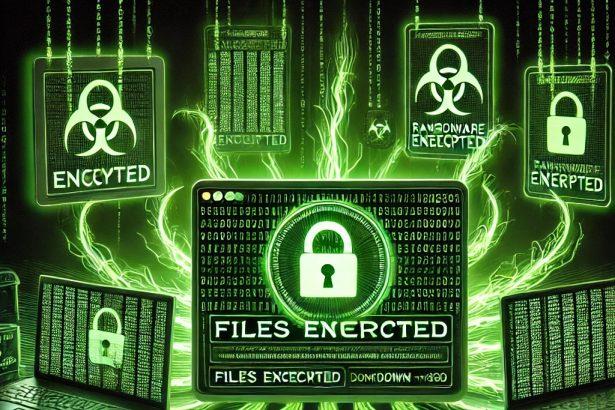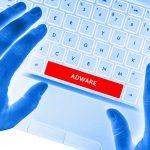Warlock Group ransomware is a destructive file-encrypting malware strain, believed to be a variant of X2anylock. It specifically targets unpatched Microsoft SharePoint servers by exploiting critical zero-day vulnerabilities. Once inside a system, it encrypts files and demands ransom through anonymous communication channels.
Threat Overview
| Item | Details |
|---|---|
| Threat type | Ransomware (crypto-virus, file locker) |
| Encrypted file extension | .x2anylock |
| Ransom note file name | How to decrypt my data.txt |
| Associated contact method | qTox chat ID via a dark web site |
| Detection names | Avast: Win32:MalwareX-gen [Ransom], ESET-NOD32: Variant Of Win32/Filecoder.Babyk.A, Kaspersky: Trojan-Ransom.Win32.Encoder.aeew, Microsoft: Ransom:Win32/WarLock.MKV!MTB, Combo Cleaner: Trojan.GenericKD.76936829 |
| Symptoms of infection | Files renamed with .x2anylock extension, rendered inaccessible, ransom note displayed |
| Damage & distribution methods | Data encryption, potential data theft; spreads through phishing emails, pirated software, exploit kits, infected websites, RDP brute-force, and SharePoint server exploits |
| Danger level | High |
| Removal tool | SpyHunter |
Warlock Group Ransom Note
The ransom note dropped by the malware is titled How to decrypt my data.txt and includes the following message:
We are [Warlock Group], a professional hack organization. We regret to inform you that your systems have been successfully infiltrated by us, and your critical data, including sensitive files, databases, and customer information, has been encrypted. Additionally, we have securely backed up portions of your data to ensure the quality of our services.
====>What Happened?
Your systems have been locked using our advanced encryption technology. You are currently unable to access critical files or continue normal business operations. We possess the decryption key and have backed up your data to ensure its safety.
====>If You Choose to Pay:
Swift Recovery: We will provide the decryption key and detailed guidance to restore all your data within hours.
Detailed Evaluation
How I Got Infected
In most cases, infection occurs when attackers exploit critical vulnerabilities in unpatched Microsoft SharePoint servers. These zero-day flaws allow for remote code execution and installation of web shells, which are used to deploy the ransomware across the victim’s network. In addition to this, the malware can spread via phishing emails, infected USB drives, fake software installers, and compromised websites. Remote Desktop Protocol (RDP) attacks and pirated software are also common infection vectors.
What Does It Do
Warlock Group ransomware encrypts valuable files on infected systems using strong encryption algorithms and appends the .x2anylock extension. It drops a ransom note in affected directories, instructing victims to contact the attackers through a qTox ID. The malware may also utilize credential harvesting tools to gain wider access, execute remote commands, and disable security defenses. In some cases, attackers steal sensitive information before encrypting the files to increase pressure on the victim to pay.
Should You Be Worried for Your System
Absolutely. This ransomware targets both large and small organizations, and its ability to spread through advanced exploitation techniques makes it a critical threat. The financial losses from encrypted data, downtime, and potential data leaks can be devastating. Even if a ransom is paid, there’s no guarantee that data will be fully restored or that backdoor access won’t be retained by the attackers. Timely patching of systems and strong cybersecurity hygiene are vital to avoid compromise.
Manual Ransomware Removal Guide
Warning: Manual removal is complex and risky. If not done correctly, it can lead to data loss or incomplete removal of ransomware. Only follow this method if you are an advanced user. If unsure, proceed with Method 2 (SpyHunter Removal Guide).
Step 1: Disconnect from the Internet
- Unplug your Ethernet cable or disconnect Wi-Fi immediately to prevent further communication with the ransomware’s command and control (C2) servers.
Step 2: Boot into Safe Mode
For Windows Users:
- For Windows 10, 11:
- Press Windows + R, type
msconfig, and hit Enter. - Go to the Boot tab.
- Check Safe boot and select Network.
- Click Apply and OK, then restart your PC.
- Press Windows + R, type
- For Windows 7, 8:
- Restart your PC and press F8 repeatedly before Windows loads.
- Select Safe Mode with Networking and press Enter.
For Mac Users:
- Restart your Mac and immediately press and hold the Shift key.
- Release the key once you see the Apple logo.
- Your Mac will start in Safe Mode.
Step 3: Locate and Terminate Malicious Processes
For Windows Users:
- Press Ctrl + Shift + Esc to open Task Manager.
- Look for suspicious processes (e.g., unknown names, high CPU usage, or random letters).
- Right-click on the process and select End Task.
For Mac Users:
- Open Activity Monitor (Finder > Applications > Utilities > Activity Monitor).
- Look for unusual processes.
- Select the process and click Force Quit.
Step 4: Delete Malicious Files
For Windows Users:
- Press Windows + R, type
%temp%, and hit Enter. - Delete all files in the Temp folder.
- Navigate to:
C:\Users\[Your Username]\AppData\RoamingC:\Users\[Your Username]\AppData\LocalC:\Windows\System32
- Look for suspicious files related to the ransomware (random file names, recently modified) and delete them.
For Mac Users:
- Open Finder and go to Go > Go to Folder.
- Type
~/Library/Application Supportand delete suspicious folders. - Navigate to
~/Library/LaunchAgentsand remove unknown.plistfiles.
Step 5: Remove Ransomware from Registry or System Settings
For Windows Users:
Warning: Incorrect changes in the Registry Editor can damage your system. Proceed with caution.
- Press Windows + R, type
regedit, and hit Enter. - Navigate to:
HKEY_CURRENT_USER\SoftwareHKEY_LOCAL_MACHINE\Software
- Look for unfamiliar folders with random characters or ransomware-related names.
- Right-click and select Delete.
For Mac Users:
- Go to System Preferences > Users & Groups.
- Click on Login Items and remove any suspicious startup items.
- Navigate to
~/Library/Preferencesand remove malicious.plistfiles.
Step 6: Restore System Using System Restore (Windows) or Time Machine (Mac)
For Windows Users:
- Press Windows + R, type
rstrui, and hit Enter. - Click Next, choose a restore point before the infection, and follow the prompts to restore your system.
For Mac Users:
- Restart your Mac and hold Command + R to enter macOS Utilities.
- Select Restore from Time Machine Backup.
- Choose a backup prior to the ransomware infection and restore your system.
Step 7: Use a Decryption Tool (If Available)
- Visit No More Ransom (www.nomoreransom.org) and check if a decryption tool is available for your ransomware variant.
Step 8: Recover Files Using Backup
- If you have backups on an external drive or cloud storage, restore your files.
Automatic Ransomware Removal Using SpyHunter
If manual removal seems too risky or complicated, using a reliable anti-malware tool like SpyHunter is the best alternative.
Step 1: Download SpyHunter
Download SpyHunter from the official link: Download SpyHunter
Or follow the official installation instructions here:
SpyHunter Download Instructions
Step 2: Install SpyHunter
- Open the downloaded file (
SpyHunter-Installer.exe). - Follow the on-screen prompts to install the program.
- Once installed, launch SpyHunter.
Step 3: Perform a Full System Scan
- Click on Start Scan Now.
- SpyHunter will scan for ransomware and other malware.
- Wait for the scan to complete.
Step 4: Remove Detected Threats
- After the scan, SpyHunter will list all detected threats.
- Click Fix Threats to remove the ransomware.
Step 5: Use SpyHunter’s Malware HelpDesk (If Needed)
If you are dealing with a stubborn ransomware variant, SpyHunter’s Malware HelpDesk provides custom fixes to remove advanced threats.
Step 6: Restore Your Files
If your files are encrypted:
- Try No More Ransom (www.nomoreransom.org) for decryption tools.
- Restore from cloud storage or external backups.
Preventing Future Ransomware Attacks
- Keep backups on an external hard drive or cloud storage.
- Use SpyHunter to detect threats before they infect your system.
- Enable Windows Defender or a trusted antivirus program.
- Avoid suspicious emails, attachments, and links.
- Update Windows, macOS & software regularly.
Conclusion
Warlock Group ransomware is a severe and professionally deployed malware threat that leverages advanced zero-day exploits and traditional attack vectors to encrypt and potentially steal valuable data. Its encryption method, stealthy propagation, and anonymous communication make it particularly dangerous. Victims are left with little recourse beyond backups or specialist removal tools. Paying the ransom is discouraged due to the risks of further compromise and data misuse.




